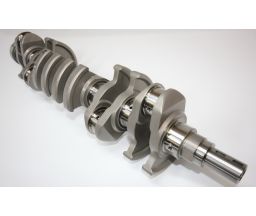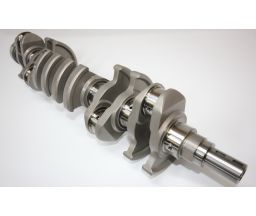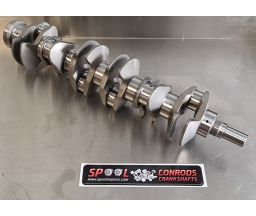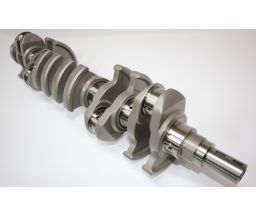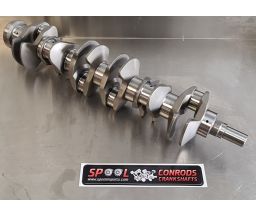Forged vs Billet Crankshafts
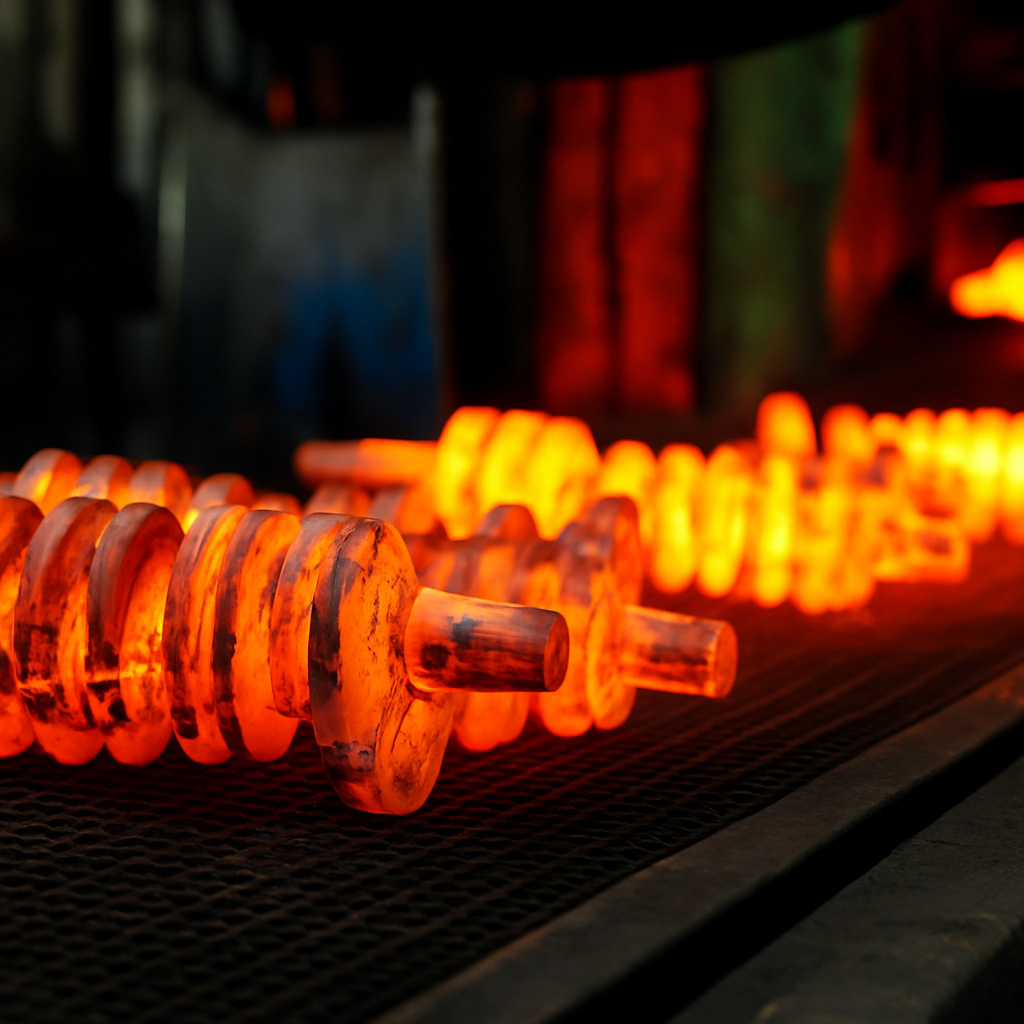
Forged vs Billet Crankshafts — what’s really different, and which one’s right for your build? At Spool Imports, we’ve designed and tested both types across LS, RB, and Barra platforms to handle serious power. Below we break down how each is made, why it matters, and when it’s worth stepping up to a billet crankshaft.
TL;DR: A quality forged crankshaft is perfect for most high-horsepower street and strip builds. Billet is for the serious player chasing extreme boost, custom specs, or sustained rpm stability. All Spool billet LS and Barra cranks are full counterweight for superior balance and bearing life.
- Forged LS Cranks: Available in 3.622" and 4.000" strokes.
- Billet LS & Barra Cranks: Both feature full counterweight designs for ultimate stability.
- RB & Barra Billet Cranks: Also offered in OEM stroke for factory-spec balance with billet strength.
- Material Upgrade: Spool is progressively moving from 4340 billet to EN40B billet steel — delivering higher core strength, toughness, and fatigue life.
How They’re Made (and Why It Matters)
Forged Crankshafts
- Process: Steel is heated and forged under pressure to flow the grain along the crank’s shape, improving fatigue resistance.
- Spool LS Forged Range: Offered in 3.622” and 4.000” strokes — covering factory and stroker builds.
- Strength: Excellent for most 800–1,200 hp LS combinations when balanced with our H-Beam or Drag Pro conrods.
Billet Crankshafts
- Process: Machined from a solid bar of premium steel, now transitioning to EN40B billet — a nitriding-grade alloy known for exceptional fatigue resistance and stability.
- Advantages: Custom strokes, counterweights, journal sizing, and oiling layouts are possible. Each billet crank is fully CNC profiled and precision balanced.
- Spool Billet Features:
- LS and Barra Billet Cranks: Full counterweight design for maximum stability at high rpm.
- RB and Barra Billet Cranks: Also available in OEM stroke configurations for drop-in strength upgrades.
Why Full Counterweight Design Matters
Full counterweight designs improve crankshaft stability, reduce main bearing loads, and prevent whip at high rpm — especially in long-stroke and turbocharged engines. Our Billet LS and Barra cranks all use full counterweight layouts, ensuring smoother operation and extended bearing life even under sustained load.
For LS engines, this design can require minor block clearancing. Learn more in our Full Counterweight LS Crankshaft Clearancing Guide.
Forged vs Billet: Real-World Scenarios
| Application | Forged Crank | Billet Crank |
|---|---|---|
| 800–1,200 hp street/strip LS build | Perfect with 3.622” or 4.000” forged crank | Optional upgrade for sustained rpm |
| 1,200–1,800+ hp drag or roll racing | Possible with premium balancing | Recommended for strength & stiffness |
| Custom stroke or journal sizing | Limited by forging dies | Fully customisable via billet CNC machining |
| Sustained 8000+ rpm use | Good with balance optimisation | Best for high rpm durability |
Material Matters: 4340 vs EN40B
Traditional 4340 billet cranks have been the industry benchmark for years, but at Spool, we’re moving progressively to EN40B billet steel. It’s a high-nickel, nitriding-grade material offering superior core strength, better wear resistance, and enhanced stability under extreme load cycles. It’s the next evolution for serious builders chasing endurance-level reliability.
Platform-Specific Notes
GM LS
- Available in 3.622” and 4.000” forged strokes.
- Billet version features full counterweight design for high-rpm stability.
- Ideal for turbo, nitrous, and large displacement builds.
Nissan RB
- Billet cranks available in OEM stroke and custom long-stroke formats.
- Perfect for RB30 or RB34 stroker builds requiring precise balance and strength.
Ford Barra
- All billet versions are full counterweight for maximum stability under big boost.
- Available in OEM stroke and long-stroke options.
- Now produced in EN40B billet steel for ultimate endurance strength.
Common Mistakes to Avoid
- Skipping bobweight matching: Always weigh your piston, pin, rod, and rings before balancing.
- Ignoring fillet clearance: Verify bearing chamfer clearance on billet cranks with large radii.
- Skipping block clearance checks: Especially with full-counterweight LS designs.
- Assuming billet automatically means better: Both designs have their place depending on rpm and power goals.
Need Help Spec’ing Your Crank?
Tell us your power goal, rpm limit, and intended use. We’ll recommend the right forged or billet crankshaft to match your rotating assembly.
FAQs: Forged vs Billet Crankshafts
Does Spool make both forged and billet LS cranks?
Yes. We offer 3.622” and 4.000” forged LS cranks for most street/strip builds, and billet LS cranks with full counterweights for maximum stability at high rpm.
What material is used in Spool billet cranks?
We are progressively transitioning from 4340 billet steel to EN40B billet, a higher-spec alloy used in endurance and motorsport engines for its superior fatigue strength and wear resistance.
Are Spool billet cranks full counterweight?
Yes — all Spool LS and Barra billet cranks are full counterweight, improving balance and bearing life under extreme rpm and load.
Are OEM stroke options available?
Yes. RB and Barra billet cranks are also available in OEM stroke configurations, perfect for those wanting factory geometry with billet-level strength.
When should I upgrade from forged to billet?
For power levels over 1,200 hp, sustained high rpm use, or custom stroke requirements, a billet crankshaft becomes the logical upgrade for stiffness, stability, and durability.

